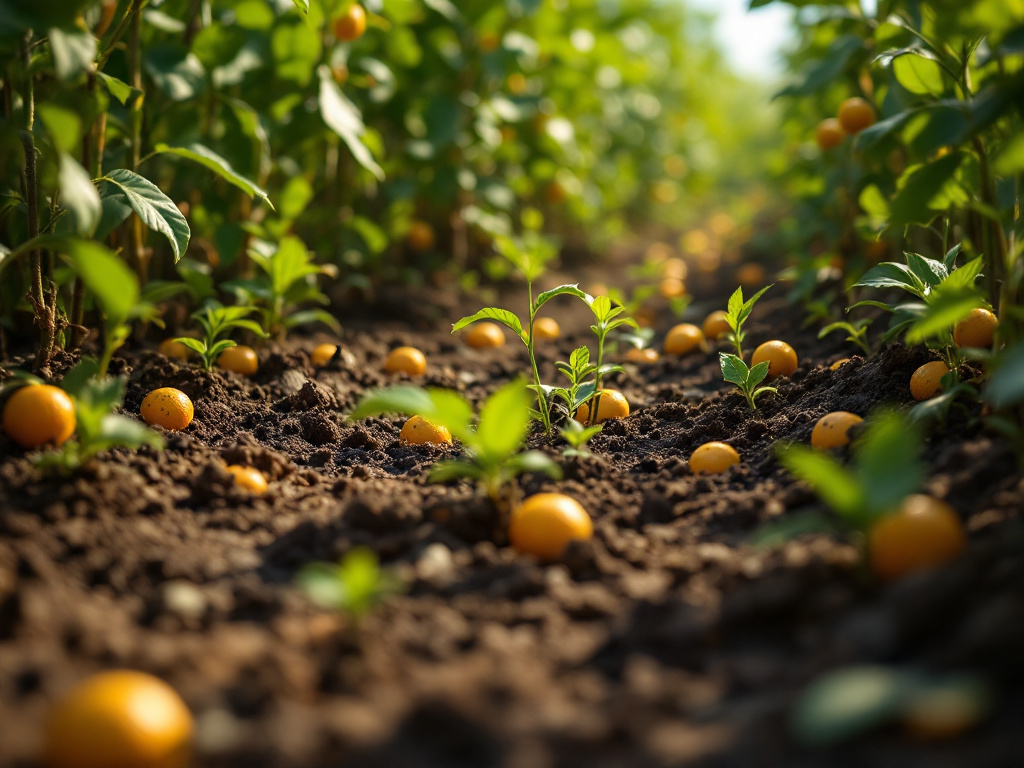Image generated by flux-ai.io & content generated by ChatGPT Version 4o-mini
Understanding Herbicide Residues: What Liberty Farmers Need to Know
In Liberty County, where agriculture is a vital part of our community, many farmers face challenges as they consider what to do with land previously used for citrus crops. A recent scholarly article sheds light on an important aspect of this transition: the impact of herbicide residues left in the soil after citrus farming.
The Problem with Herbicides
When citrus groves are abandoned or removed, farmers often want to plant different crops in that same land. However, the herbicides (chemicals used to kill weeds) applied in those citrus groves can persist in the soil long after the trees are gone. Some of these herbicides can prevent new crops from growing for months or even years, depending on what was used and how much.
For example, if a farmer in Liberty wants to switch from citrus to growing corn or soybeans, they need to know what herbicides were applied in the past. Different herbicides have different waiting periods before new crops can be planted. Failure to respect these waiting periods can lead to poor crop growth or even crop failure.
Why Does This Matter?
For Liberty County’s farmers, understanding these herbicide restrictions is crucial. With a median household income of around $53,824, many families depend on a successful harvest to make ends meet. If herbicide residues are too high, it can lead to lost income and wasted resources.
Moreover, some herbicides can affect livestock. If a farmer wants to grow feed for cattle or other animals, certain chemicals can make that feed unsafe for consumption. This is a significant concern in a county where agriculture, including livestock, plays an important role in the economy.
How Can Farmers Test for Residues?
To help determine if the soil is safe for planting, farmers can use a method called a bioassay. This is a test where farmers grow small amounts of plants in the suspected soil to see if they show signs of distress—like yellowing leaves or stunted growth. If the test plants thrive, it’s a good indication that the soil is ready for new crops.
This method can be particularly useful in areas where herbicide application may have been uneven, such as along field edges or where sprayers turned around. By testing various spots, farmers can get a clearer picture of what might be present in the soil.
Looking Ahead
As Liberty County farmers consider their options for land previously dedicated to citrus, it is vital to check the labels of any herbicides that were used. These labels often contain specific information about how long to wait before planting new crops, as well as any restrictions on what can be grown.
Additionally, it is important for farmers to communicate with local beekeepers regarding their crop management practices to minimize risks to pollinators. Maintaining this communication can help protect both crops and pollinators, ensuring a balanced agricultural ecosystem.
With the right knowledge and preparation, farmers in Liberty can successfully transition their lands to new agricultural uses, ensuring that they remain productive and contribute to the local economy. This understanding not only helps individual farmers but can also strengthen our community’s agricultural landscape as a whole.
So, if you’re a local farmer looking to make a change, take the time to understand your soil and the remnants of past herbicide use. It could make all the difference for your next crop and your family’s livelihood.
References
HS1062/HS316: Crop Considerations for Citrus Lands. (n.d.). Ask IFAS – Powered by EDIS. https://edis.ifas.ufl.edu/publication/HS316

